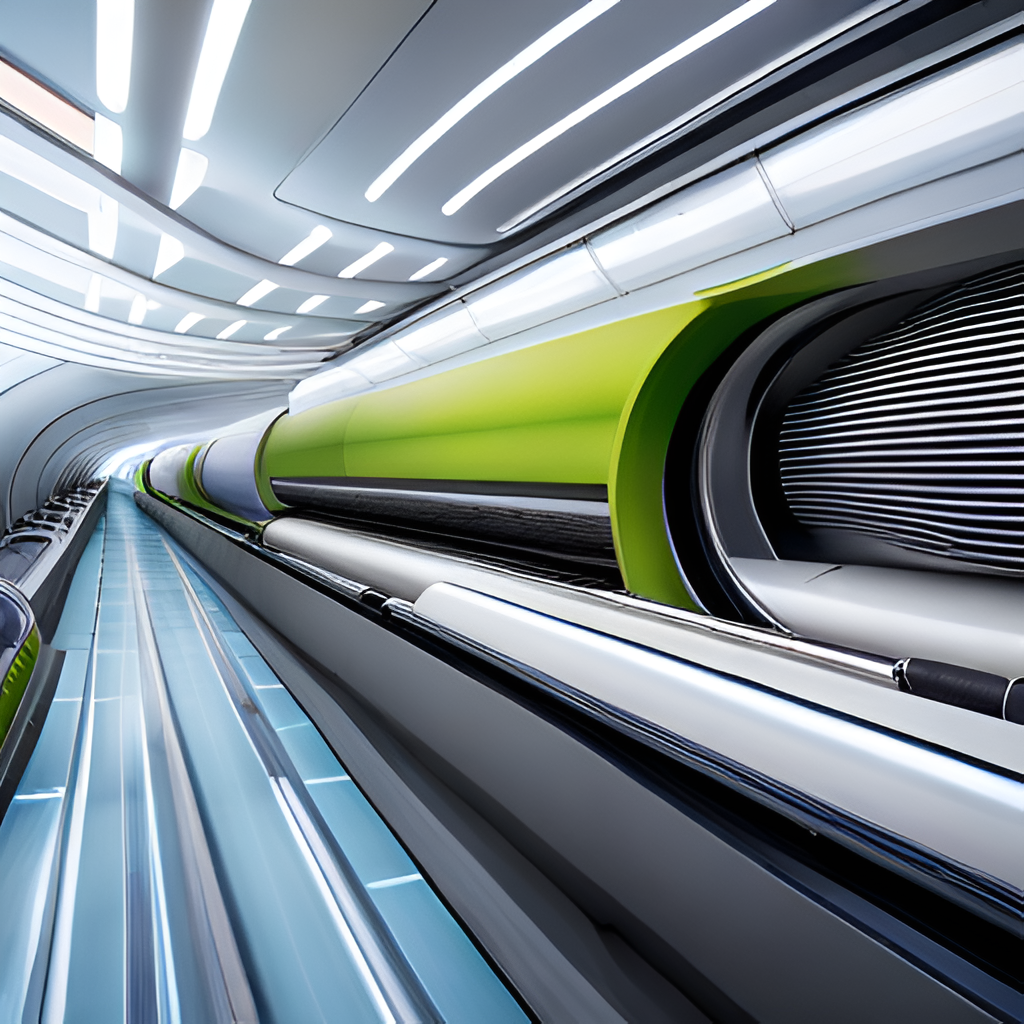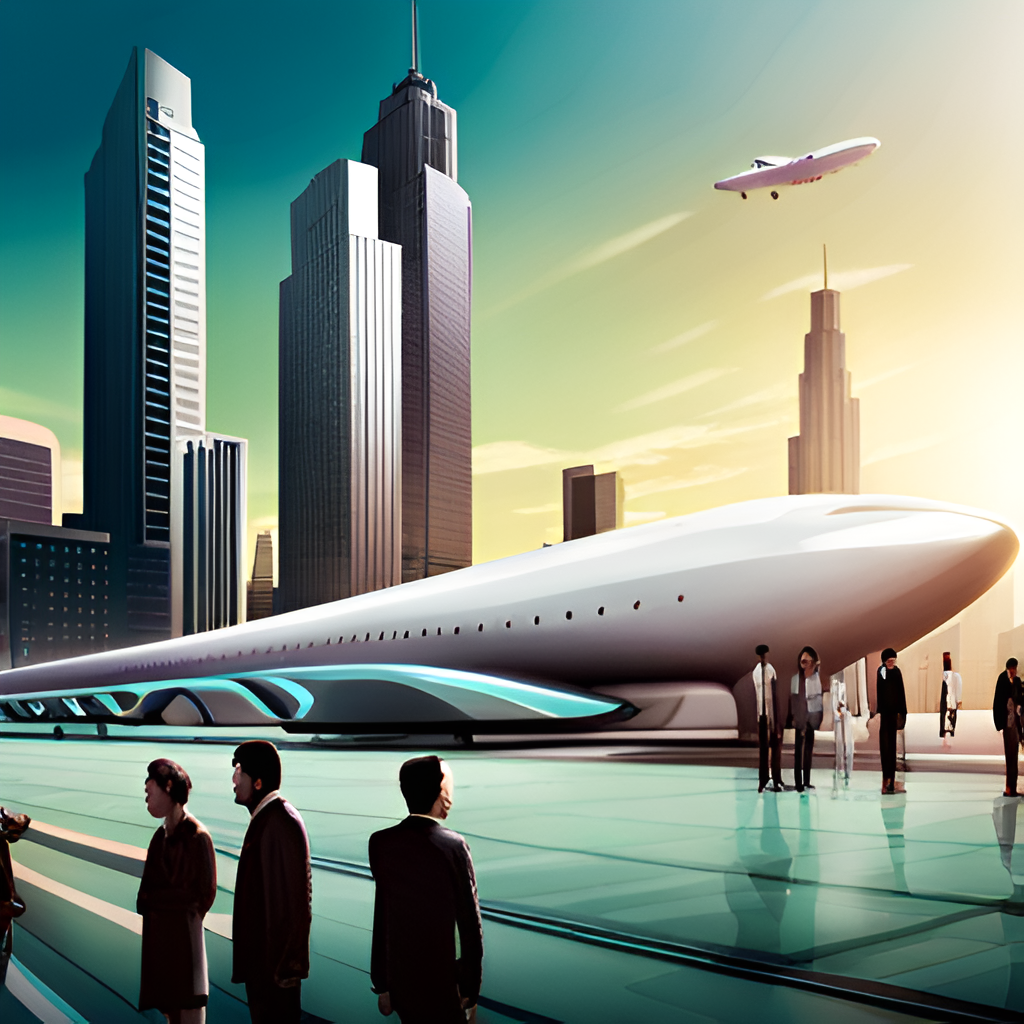
Open-Source Internship opportunity by OpenGenus for programmers. Apply now.
In this article at OpenGenus provides an overview of The Hyperloop is a proposed mode of transportation that promises to revolutionize the way we travel. The technology was first proposed by billionaire entrepreneur Elon Musk in 2013, and several companies have since been working to make it happen. In this blog, we take a closer look at the Hyperloop and its potential impact on transportation.
Table of Content:
1.Introduction
2. What is Hyperloop?
3. How does Hyperloop work?
4. some key features of the Hyperloop transportation system
5. Advantages of Hyperloop
6. Potential Impact on Transportation
7. Challenges and limitations
- High infrastructure cost:
- Safety and regulatory concerns:
- Operational challenges:
- Conclusion
Introduction:
Elon Musk set out his vision for a futuristic, super high-speed transportation system that would see passenger pods move through a partial vaccum in steel tubes addressing conventional vehicles: friction and air resistance.
It can slash the eight hour bus ride, four hour train journey and convoluted three hour air travel experience between the two cities to just 30 minutes. Musk suggested that compression fans would move air around the passenge
r pods to minimise the drag and create air bearing beneath them, floating them off the surface of the tubes. It is not away from Kingdom Brunel's atmospheric railway that ran between Exeter and Plymouth in the UK from 1847 to 1848. That system, moved carriages with pressuried air. The air was extracted from a pipe that ran between the rails by pumping stations situated roughly every three miles along the route, creating vaccum.
Many groups and company are now working for the hyperloop technology. Musk encorages people time to time to build the pods and many are doing so.
~
Transportation has always been a critical component of human civilization, and it has evolved significantly over time. From horses to trains, cars to planes, transportation technology has played a critical role in shaping the way we live, work, and interact. The Hyperloop represents the latest development in transportation technology, promising to revolutionize the way we travel. This blog takes a closer look at the Hyperloop, its working, potential advantages, challenges, and limitations.
What is Hyperloop?
The Hyperloop is a proposed transportation system that uses a network of vacuum-sealed tubes to transport people and cargo at high speeds. The technology was first proposed by billionaire entrepreneur Elon Musk in 2013, and since then, several companies have been working on developing this technology. The Hyperloop is designed to be faster, safer, and more energy-efficient than traditional modes of transportation.

How does Hyperloop work?
The Hyperloop uses a combination of magnetic levitation and air pressure to propel pods containing people or cargo through tubes that are partially evacuated to reduce air resistance. The pods are designed to travel at high speeds of up to 760 mph, which is faster than most commercial airplanes. The technology is expected to revolutionize transportation by reducing travel times and costs while also being more energy-efficient and safer than traditional modes of transportation.
Here are some key features of the Hyperloop transportation system:
-
Hyperloop uses a network of tubes to transport people and goods at high speeds. The tubes are designed to be low-pressure, which reduces air resistance and allows the pods to travel at high speeds with minimal energy consumption.
-
The pods that travel through the tubes are designed to be aerodynamic and lightweight, which helps to reduce energy consumption and increase speed.
-
Hyperloop is powered by renewable energy sources such as solar power, which makes it an environmentally friendly mode of transportation.
-
The system is designed to be fully autonomous, which means that it can operate without the need for a driver or operator.
-
Hyperloop is designed to be safe and secure, with multiple safety features such as emergency brakes, redundant systems, and fail-safe mechanisms.
-
The system is designed to be scalable, which means that it can be expanded to accommodate more passengers and cargo as demand grows.
-
Hyperloop is designed to be cost-effective, with lower operating costs than traditional modes of transportation such as trains and planes.
Advantages of Hyperloop:
The Hyperloop has the potential to revolutionize transportation in several ways, including:
Speed: The Hyperloop has the potential to transport people and cargo at incredibly high speeds, significantly reducing travel times. This could have significant implications for businesses and individuals who need to move quickly across large distances.
Energy Efficiency: The Hyperloop is designed to be more energy-efficient than traditional modes of transportation, potentially reducing carbon emissions and reducing dependence on fossil fuels. This could help mitigate the effects of climate change and reduce the cost of transportation.
Safety: The Hyperloop is designed to be safer than traditional modes of transportation, with the potential to reduce accidents and fatalities. The use of magnetic levitation technology reduces the risk of derailments or collisions, making the Hyperloop a safer alternative to traditional modes of transportation.
Cost: Hyperloop has the potential to be more cost-effective than traditional modes of transportation, with the potential to reduce travel costs and increase accessibility. This could have significant implications for businesses and individuals who need to move quickly across large distances, making it easier to connect people and markets.

Hyperloop Projects and Partnerships:
A. Virgin Hyperloop:
Virgin Hyperloop, in collaboration with Virgin Group and other partners, has made significant progress in developing and testing Hyperloop technology, with the aim of creating a commercial Hyperloop system.
B. Global Interest and Development:
Countries such as the United States, the United Arab Emirates, and India have expressed interest in exploring Hyperloop projects, conducting feasibility studies, and seeking partnerships to bring this revolutionary transportation concept to life.
Potential Impact on Transportation:
A. Urban Mobility and Commuting:
The Hyperloop has the potential to reshape urban commuting, reducing congestion and offering faster, more efficient transportation options, enabling individuals to live farther away from city centers without sacrificing travel convenience.
B. Interconnectivity and Regional Travel:
The Hyperloop's ability to connect cities and regions seamlessly could enhance economic integration and tourism, fostering growth and development in previously isolated areas.
C. Sustainable Transportation:
By offering a sustainable and energy-efficient alternative to traditional transportation, the Hyperloop could contribute to reducing carbon emissions and mitigating the environmental impact of travel.
Challenges and limitations:
Despite its potential advantages, the Hyperloop faces several challenges and limitations, including:
High infrastructure cost: The development of the infrastructure required to support the Hyperloop is a significant challenge. The cost of building a network of tubes, stations, and other necessary infrastructure is high, and it could take years to complete.
Safety and regulatory concerns: Transporting people at high speeds using a vacuum-sealed tube presents several safety and regulatory challenges. It would require a new set of regulations and standards to ensure passenger safety, which could take time to develop.
Operational challenges: Operating the Hyperloop could also present several challenges, including the need for skilled personnel to manage the system, as well as the need for regular maintenance and upkeep to ensure that the system remains safe and reliable.

Conclusion:
The Hyperloop represents a major step forward in the development of transportation technology with the potential to revolutionize the way we travel. While there are legitimate concerns about the safety, cost, and regulatory implications of this technology, the potential benefits are huge and exciting. As the Hyperloop continues to evolve, it will be fascinating to see what the future holds for this groundbreaking technology.
In conclusion, the Hyperloop has the potential to revolutionize transportation, and it represents the latest development in transportation technology. It promises to be faster, safer, and more energy-efficient than traditional
